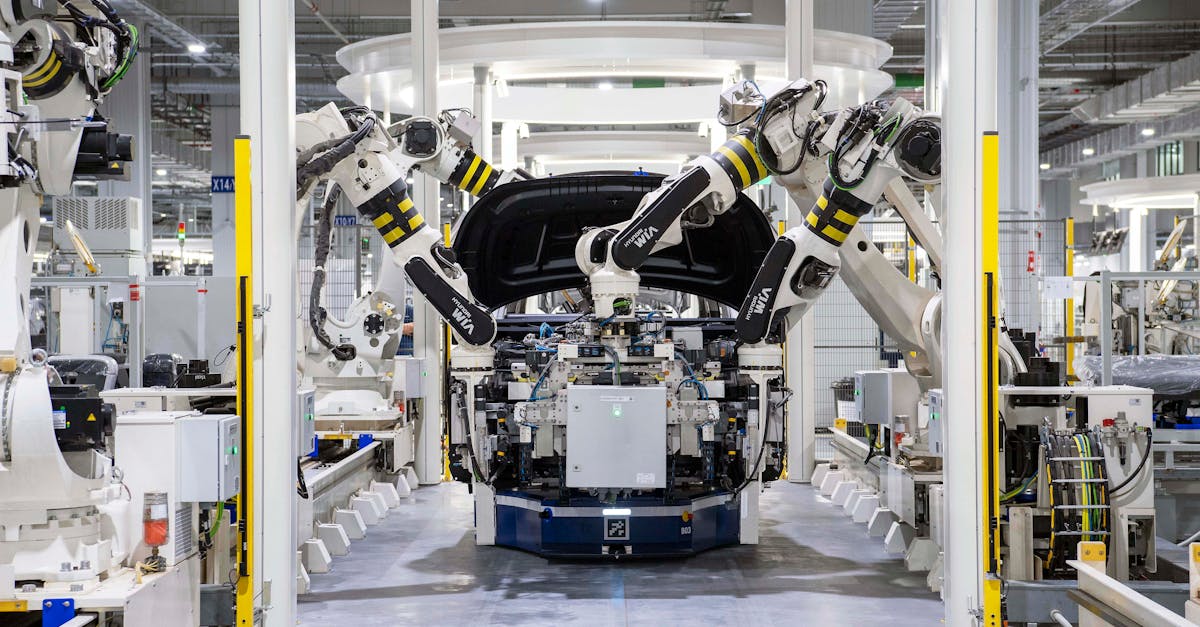Innovative Economic Shifts 2037
Introduction
In 2037, the global economic landscape is undergoing transformative shifts, redefining how societies and businesses operate. Several key trends are driving this change, ranging from advancements in technology to evolving consumer behaviors. These shifts are not isolated but interwoven with global challenges and opportunities. The new economic model challenges conventional practices, emphasizing sustainability, inclusivity, and innovation. How have these fragments of change come together in the grand mosaic of global economic restructuring? As we step into this unpredictable yet exciting future, understanding these dynamics is crucial for navigating the world of 2037.
Advertisement
Technology and Automation Revolution
The most conspicuous change in 2037 is the advanced integration of technology and automation across all sectors. Robotics and artificial intelligence are omnipresent, not just enhancing productivity but also elevating service delivery. Automated systems have replaced many routine jobs, pushing the workforce towards more creative and strategic roles. The challenge of unemployment has been addressed by reskilling initiatives, focusing on developing human skills that AI cannot replicate. Digital twins and virtual simulations are now indispensable tools in planning and development. This era marks a shift from manual to intelligence-driven processes, reshaping the economic landscape.
Advertisement
The Rise of Green Economies
Concerns about climate change have propelled the growth of green economies, a crucial component of the economic infrastructure in 2037. Clean energy, long a niche market, is now mainstream, with renewables accounting for the majority of global energy production. Innovations in solar panel technologies and battery storage have drastically reduced costs. Circular economy practices, emphasizing recycling and sustainable resource management, are standard operations. Governments and private organizations collaborate on large-scale green projects, catalyzing both environmental benefits and economic growth. This shift is transforming industries, making sustainability a core business strategy.
Advertisement
Distributed Workforce Dynamics
The concept of work has evolved dramatically, driven by advancements in communication technologies and changing worker preferences. Remote and hybrid working models dominate, dissolving geographical boundaries and broadening talent pools. The traditional 9-to-5 job structure is obsolete, replaced by flexible schedules that improve work-life balance. The global talent network is more fluid, with individuals working for companies across continents without relocating. This evolution promotes inclusivity and diversity, fostering a broader range of perspectives and creativity. Workspaces are now collaborative digital environments integrating seamlessly with daily life.
Advertisement
Innovation-Driven Economies
2037 sees the rise of innovation as a primary economic driver, transcending traditional industry boundaries. Startups and tech hubs proliferate worldwide, creating ecosystems of innovation and entrepreneurship. Governments invest heavily in research and development, aware that future economic competitiveness hinges on continual innovation. Artificial intelligence, bioengineering, and quantum computing stand at the forefront, offering solutions to complex global challenges. Intellectual property strategies shift towards open innovation frameworks, encouraging collaboration across borders and industries. The economic landscape becomes a dynamic tapestry, woven with creativity and resourcefulness.
Advertisement
Monetary System Redefinition
The financial world of 2037 thrives on a redefined monetary system, adapting to technological innovations and societal needs. Cryptocurrencies and digital currencies complement traditional money, offering more secure, transparent, and efficient transactions. Central banks have adopted blockchain technology for their operations, enhancing security and trust. Finance and banking services have evolved into integrated digital platforms, emphasizing user control and personalization. Meanwhile, the proliferation of digital assets and tokens as stores of value adds complexity to the financial ecosystem, prompting regulatory adaptations. This new monetary landscape offers both opportunities and challenges in maintaining stability.
Advertisement
The Role of Artificial Intelligence in Education
In 2037, personal and organizational development emphasize lifelong learning, facilitated by artificial intelligence. AI-driven educational platforms provide personalized learning paths, adapting real-time to individual capabilities and interests. Humans are encouraged to develop skills that machines cannot replicate, such as empathy, critical thinking, and creativity. Organizations invest in upskilling and reskilling programs to bridge the competency gap in evolving job markets. Educational systems worldwide are interconnected, offering cross-border learning experiences and cultural exchanges. This learning revolution empowers individuals to thrive in a rapidly changing economy.
Advertisement
Redefining Global Trade and Commerce
Global trade in 2037 is characterized by its dependence on innovation and technology, as well as shifts towards regional supply chains to mitigate risks. Automation, AI, and advanced logistics streamline supply chains, making them more efficient and resilient. Blockchain technology ensures transparency and trust in trading relationships, reducing fraud and inefficiency. Cross-border e-commerce booms with seamless payment systems and rapid delivery mechanisms. Trade policies adapt to digital realities, fostering international cooperation while addressing challenges of tariff and non-tariff barriers. The integration of technology in trade fosters a more connected yet complex global marketplace.
Advertisement
Challenges and Ethical Considerations
The revolutionary economic shifts of 2037 also bring forth ethical challenges and concerns. Privacy issues and data security are of utmost importance in the digital era. As automation replaces human labor, societal structures must evolve to address inequality and provide universal safety nets. Transitioning to greener economies requires balancing economic growth with environmental preservation. The reliance on AI and technology prompts debates on digital ethics and the humane use of machines. Although daunting, addressing these ethical considerations is vital to ensure that innovation and growth benefit the broader society.
Advertisement
Conclusion and Future Prospects
The economic shifts underway in 2037 paint a picture of a world alive with potential and challenge. These innovations offer opportunities for growth, sustainability, and inclusivity. They demand adaptability and proactive strategies from individuals, businesses, and governments alike. Embracing change with responsibility and mindfulness paves the way for a balanced and thriving global economy. As the world stands on the threshold of this transformative era, the stage is set for prosperity rooted in innovation, collaboration, and shared progress.
Advertisement


